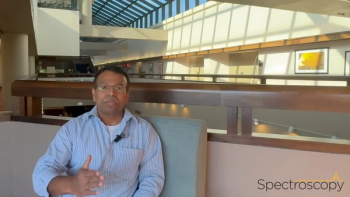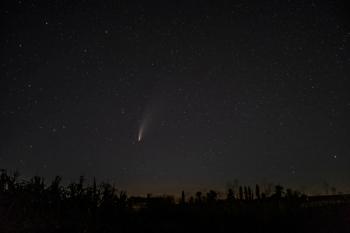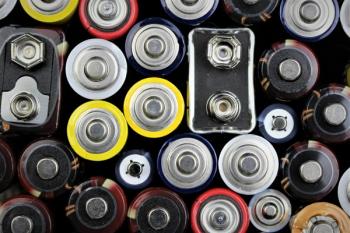
How Can We Improve the Reliability of Photoluminescence Data?
Key Takeaways
- Photoluminescence spectroscopy is a non-destructive technique used to study electronic structures and optical properties of materials.
- The study identified instrumental artifacts and experimental conditions that can distort PL data, affecting scientific conclusions.
A new study led by Meirong Liu at the Beijing National Laboratory for Molecular Sciences provides a comprehensive framework to eliminate instrumental and experimental artifacts in photoluminescence spectroscopy.
Recently, a team of researchers led by Meirong Liu from the Beijing National Laboratory for Molecular Sciences (BNLMS) at the Institute of Chemistry, Chinese Academy of Sciences in Beijing investigated photoluminescence (PL) measurements and the factors that influence the reliability of said measurements. This study, published in the journal Spectrochimica Acta Part A: Molecular and Biomolecular Spectroscopy, highlights how instrumental artifacts and common experimental conditions can inadvertently distort raw PL data, potentially steering scientific conclusions in misleading directions (1).
What is PL spectroscopy?
PL spectroscopy is a non-destructive technique often used in chemistry, nanomaterials, and optoelectronics research (1). It can provide information about the solid-state structure of the material under study (2). When light stimulates the emission of a photon, a process called photoexcitation occurs, and when this happens, the material under study goes to a higher electronic state (3). Then, as it returns back to its regular energy level, the photons are released (3). PL spectroscopy tracks these measurements, which allows them to study electronic structures, exciton dynamics, optical bandgaps, and more (1).
What is a current challenge in PL spectroscopy?
One current challenge in PL spectroscopy is that there is limited research into the reliability of raw PL data. This observation is significant because the reliability of unprocessed measurements directly affects subsequent calculations, such as decay curves and quantum yields, that guide material performance evaluations (1). Without knowing the reliability of the data, it is tough to gain a concrete understanding of nanomaterials or other materials under study.
What did the study investigate?
In their study, the research team investigated the complete optical pathway in PL spectroscopy, examining factors ranging from the intrinsic operational limits of the instrument to practical obstacles introduced during experimentation. One of the most impactful findings concerns the grating performance at the excitation site of the instrument (1). The team discovered that when excitation wavelengths fall below 300 nm, the grating can produce stray light across the 350–500 nm range (1). In certain materials, this stray light mimics real PL signals, producing artifacts that distort emission spectra (1). The researchers identified several strategies to reduce these errors, including choosing the optimal excitation wavelength and adjusting the excitation and emission slit widths. Notably, these adjustments generally do not require structural changes to most commercial photoluminescence (PL) systems, making them straightforward to implement.
What are some practical challenges that hinder PL reliability?
The researchers also dedicated a segment of their study to investigating what practical challenges hurt PL reliability. First, they examined the interactions between the excitation beam and the sample. These included scattering effects, sample container interferences, and secondary laser reflections (1). These factors contribute heavily to inaccurate measurements. Under ultrafast measurement conditions, secondary reflections from the rear surfaces of optical components can distort temporal decay profiles, complicating efforts to study carrier lifetimes and dynamic relaxation pathways (1). The researchers suggested that adjusting sample orientation or fine-tuning the incident angle of the laser source can potentially eliminate these distortions (1).
Next, another challenge is the impact of strong scattering light. The challenge with the scattering light is that it can generate broad-spectrum stray light through grating multi-stage diffraction (1). The researchers found that using band-pass or long-pass filters greatly reduces this effect, improving spectral shape consistency and reproducibility across experiments (1). These modifications allow scientists to maintain accurate measurements even when analyzing highly scattering media, such as nanophosphor suspensions or biological samples.
According to the authors, the goal of the study is not only to identify problems but to provide a practical roadmap for improving data reliability in everyday laboratory conditions (1). By combining instrumentation refinement, optical pathway management, and experimental best practices, the methodologies outlined in this study are designed to improve PL measurements.
“This study systematically examines critical factors affecting the reliability of photoluminescence measurements, encompassing both intrinsic instrument limitations and practical experimental limitations,” the authors wrote (1).
References
- Liu, M.; Sun, H.; Li, S.; et al. Reliability Analysis of Photoluminescence Measurement Data from the Intrinsic Limitation on the Instrument to the Practical Limitations During the Experiments. Spectrochimica Acta Part A: Mol. Biomol. Spectrosc. 2025, 348 Part 2, 127107. DOI:
10.1016/j.saa.2025.127107 - Tuschel, D. Photoluminescence Spectroscopy Using a Raman Spectrometer. Spectroscopy 2016, 31 (9). Available at:
https://www.spectroscopyonline.com/view/photoluminescence-spectroscopy-using-raman-spectrometer#:~:text=Photoluminescence%20can%20provide%20information%20about,becomes%20two%20instruments%20in%20one . - Horiba, Photoluminescence (PL) & Electroluminescence (EL). Horiba.com. Available at:
https://www.horiba.com/usa/scientific/technologies/photoluminescence-pl/photoluminescence-pl-electroluminescence-el/#:~:text=Photoluminescence%20spectroscopy%2C%20often%20referred%20to,with%20sub%2Dmicron%20spatial%20resolution . (accessed 2025-11-24).
Newsletter
Get essential updates on the latest spectroscopy technologies, regulatory standards, and best practices—subscribe today to Spectroscopy.





